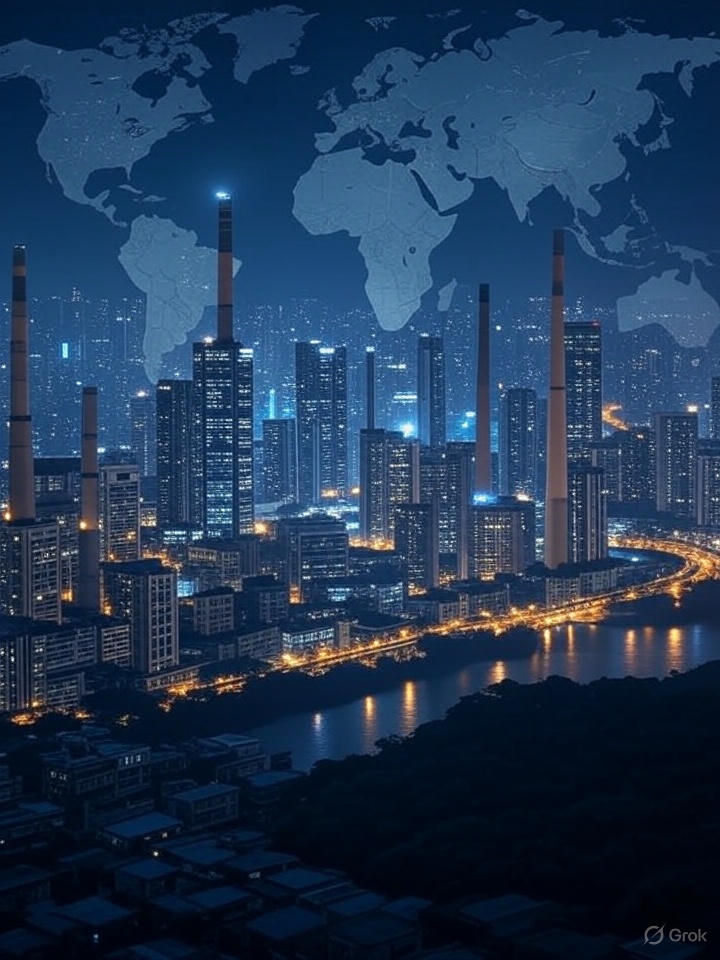China’s AI and the Global Race for Control
- thebrink2028
- Sep 6
- 4 min read

In Shanghai
In a swanky co-working space, Mei, a 28-year-old content creator, stares at her latest Douyin video frozen mid-edit. A pop-up demands she tag it as “AI-generated” because the platform’s algorithm flagged her hyper-realistic avatar—crafted by an AI tool—as synthetic. She hesitates, her finger hovering over the “comply” button. One wrong move, and her account could be throttled, her reach slashed, her livelihood in trouble. Across the city, millions like her are navigating the same invisible cage, where every pixel, every word, must now carry a digital watermark. This isn’t just about compliance—it’s about who controls the truth in a world where reality bends.
The Hidden Stakes of China’s AI Labeling Regime
China’s new AI content labeling rules, effective September 1, 2025, are no mere bureaucratic checkbox. They’re a calculated move to reshape how truth is perceived, distributed, and weaponized.
Labeling as Control, Not Just Transparency
China’s rules mandate explicit (visible text, audio cues) and implicit (metadata watermarks) labels for all AI-generated content—text, images, videos, audio, and virtual scenes. Platforms like WeChat and Douyin must detect, flag, and warn about unlabeled or tampered content. But this isn’t just about clarity. It’s a state-driven mechanism to centralize control over digital narratives. By requiring platforms to categorize content as “confirmed,” “possible,” or “suspected” AI-generated, the Cyberspace Administration of China (CAC) creates a surveillance net that tracks creators, distributors, and even users. A case in point: in 2024, a Chinese actor’s AI-generated deepfake defrauded fans, sparking public outrage. The CAC’s response wasn’t just to label—it was to ensure no narrative slips through unmonitored. This level of oversight dwarfs global standards, where most countries, including the U.S., rely on voluntary or patchwork regulations.
China’s Pragmatic AI vs. America’s AGI Obsession
While the U.S. pours billions into artificial general intelligence (AGI)—a speculative quest for machines that think like humans—China is laser-focused on “AI+” applications. Beijing’s strategy prioritizes healthcare (AI diagnostics in 80% of top hospitals by 2024), manufacturing (30% productivity gains in smart factories), and agriculture (AI-driven crop monitoring boosting yields by 15%). Unlike the U.S., where OpenAI and Google chase elusive breakthroughs, China leverages open-source models and sidesteps chip sanctions with lower-cost hardware. This pragmatic pivot, born from necessity, gives China an edge in scalable, real-world impact. For instance, Alibaba’s AI-powered supply chain tools cut logistics costs by 20% in 2024, while U.S. AGI research remains a high-risk gamble with no guaranteed payoff.
A Global Ripple Effect Buried in Plain Sight
China’s rules don’t just apply domestically—they bind foreign companies operating in its market. This extraterritorial reach sets a precedent that could inspire other nations, but it’s not discussed in Western media. In 2024, Singapore and the EU began exploring similar labeling mandates, citing China’s framework as a model. A fractured global standard where China’s iron grip on AI content could dictate terms for the internet’s future.
The Road to Digital Control
The timeline to this moment is a collision of policy, tech, and geopolitics:
2018-2020: China’s “Qinglang” campaign begins, targeting online misinformation. Early AI deepfakes, like fake celebrity endorsements, exposed regulatory gaps.
2021: The CAC introduces interim rules for deep synthesis, requiring basic labeling for AI-generated media.
2022: U.S.-China chip wars escalate. Export controls limit China’s access to high-end GPUs, pushing reliance on open-source AI and domestic innovation.
2023: A deepfake scandal involving a Chinese actor defrauds fans, amplifying calls for stricter AI governance. The U.S. faces similar issues (e.g., Taylor Swift deepfake incident) but responds with voluntary guidelines.
March 2024: CAC drafts comprehensive AI labeling rules, finalized in March 2025 as the “Measures for Labeling AI-Generated Synthetic Content.”
September 2025: Rules take effect, mandating dual labeling (explicit and implicit) across platforms, with penalties for non-compliance enforced by multiple ministries.
Geopolitically, China’s move counters U.S. dominance in AI narrative-setting. Culturally, it reflects a society wary of unchecked tech after years of online scams. Economically, it’s a bet on trust as a competitive edge—labeled content builds consumer confidence, driving adoption.
Sponsor Thank-You: A Nod to the Unsung
To the small Shanghai café where Mei and countless creators huddle over laptops, fueled by coffee and dreams—this one’s for you. Your tiny space, with its chipped mugs and warm lights, is a sanctuary for those wrestling with algorithms and ambition. Your owner, a former artist, knows the grind and keeps the Wi-Fi strong and the vibe stronger.
If you’d like to back a topic that needs daylight or share this with our 10K+ readers, visit our sponsor page or share this article to grow our community.
-Chetan Desai
Your awareness is the first step—by simply engaging with truths many fear to face, you're already part of TheBrink movement.
We'd love to invite you to subscribe to ensure you never miss our content. Many platforms and social media channels have been restricting or removing our posts, so subscribing is the best way to receive our stories directly in your inbox, unfiltered and uncensored.
Your sponsorships and donations fuel our mission to uncover hidden truths and inspire change. Click "Sponsor" or contact thebrink2028@gmail.com for partnership opportunities.
Thank you for being part of this journey.


